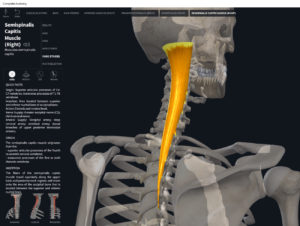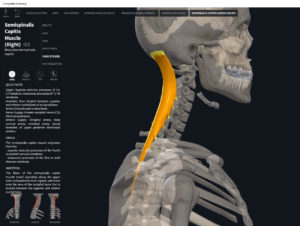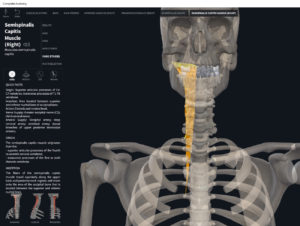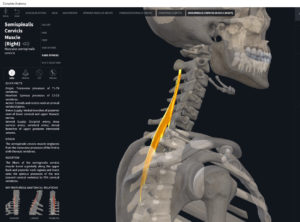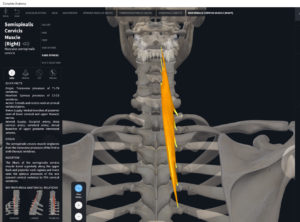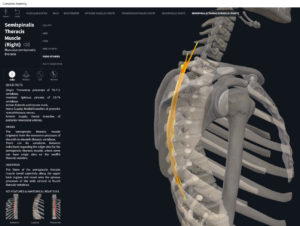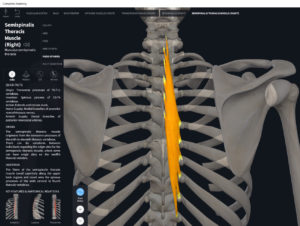Anatomy & Physiology: Muscles—Semispinalis, of transversospinalis group.
Structure.
- Semispinalis Capitis
- Origin: transverse processes of C7-T6, articular processes of C4-C6.
- Insertion: occipital bone between the superior and inferior nuchal lines.
- Semispinalis Cervicis
- Origin: transverse processes of T1-T5.
- Insertion: spinous processes of C2-C5.
- Semispinalis Thoracis
- Origin: transverse processes of T6-T10.
- Insertion: spinous processes of C6-T4.
Function.
- Concentric action: head, neck, and trunk extension; lateral flexion of head, neck, and trunk; rotate head to side opposing contracting muscle.
- Reverse mover action: lower spine extension; lower spine lateral flexion; ipsilateral rotation of the lower spine.
- Eccentric action: controls/restrains/slows flexion and contralateral lateral flexion of head, neck, and trunk; ipsilateral rotation of neck and trunk; contralateral rotation of the lower spine.
- Isometric action: stabilization of spine and head.
- Innervation: cervical and thoracic spinal nerves.
- Arterial supply: occipital artery, dorsal branches of posterior intercostal arteries, deep cervical artery.
Clinical Significance.
References
Biel, A. (2015). Trail guide to the body: A hands-on guide to locating muscles, bones and more.
Cedars-Sinai. (2018). Vertebrae of the spine. Retrieved from https://www.cedars-sinai.org/health-library/diseases-and-conditions/v/vertebrae-of-the-spine.html
Clark, M., Lucett, S., Sutton, B. G., & National Academy of Sports Medicine. (2014). NASM essentials of corrective exercise training. Burlington, MA: Jones & Bartlett Learning.
Jenkins, G., & Tortora, G. J. (2012). Anatomy and Physiology: From Science to Life, 3rd Edition International Stu. John Wiley & Sons.
Muscolino, J. E. (2017). The muscular system manual: The skeletal muscles of the human body.
